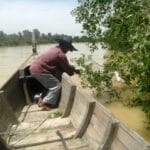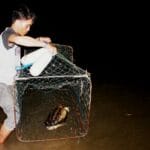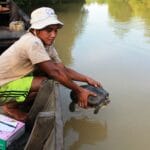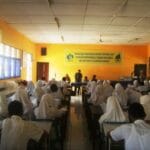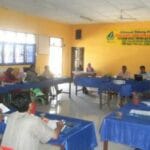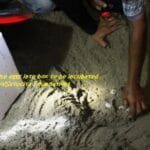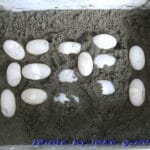Painted Terrapin Conservation
This program aims to recover wild population of Painted Terrapin (Batagur borneoensis).
Indonesia is ranked 4th in the world with 31 species where 29 native and 5 endemics. Among that, 5 species listed in World’s 25 Most Endangered Turtles, 2 species in High Risk of Extinction (TCC, 2011). These species are spread at certain locations from east to west of Indonesia: 1 found only in Sulawesi, 1 in Rote, 5 in Sumatera (4 also found in Borneo, 1 in Java). Only 2 species have been protected by regulation PP No 7 Year 1999, the conservation absolutely facing high challenges. Currently, only Painted Terrapin (B.borneoensis) that have field conservation activities. Meanwhile, another species is still lack of attention. Availability of resources is ultimate challenge.
Painted Terrapin is facing threats from eggs harvesting, predation, habitat destruction. Villagers usually collecting the eggs to self-consumption or sell to market. The eggs are also eaten by wild boar and monitor lizard. In addition, at some locations, riverine vegetations that important for providing food source and habitat for this species, fiesheries, prevent global warming, converted to farming, oil palm and producing charcoal. To overcome that threats, annual nesting patrol to secure eggs from poaching, head starting, releasing, field monitoring (no radio tracking yet), habitat restoration, environmental education have been conducted.
In this program, we have carried out some activities:
1. Observation, field monitoring and research of freshwater turtles and tortoises, such as ecology, natural history, distribution, etc.
2. Educating local people and students to save freshwater turtles and environment, included campaign, training, workshop, seminar. These activities are conducted at in class or outdoor methods.
3. Conservation of freshwater turtles, tortoises and terrapins in Northern Sumatra. Increasing wild population through ex-situ efforts. This method is implemented through carry out nesting patrol, secure the eggs, incubating the eggs in ex-situ facility, caring the hatchlings for some period, releasing the hatchlings into original habitat. We also still trying to breed the Painted terrapin in facility to produce “stock” for wild population. The facility is managed and controlled on daily basis to ensure that the individuals in healthy condition.
4. Developing freshwater turtles conservation facility. Recently this small and very basic facility is become temporary home for Painted terrapin hatchlings before released into original habitat. Improvement will be made continuously.
5. Developing community-based conservation activities. Aim to connect people and reptiles and amphibians in the wild, to increase people’s knowledge and awareness, developing local livelihood.
